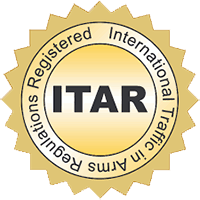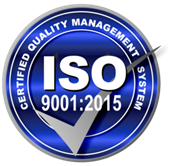
Advancements in Electroless Plating Techniques for Aerospace Components
Plating has always been an important part of the aerospace and defense industry. With the recent focus on lightweighting components, different plating techniques such as electroless plating have become even more important. This process helps protect sensitive components from EMI, corrosion, and other environmental hazards that could easily disable or damage an aircraft. As the industry continues to advance and new techniques are developed with different substrates and deposition materials, more innovative applications will continue to emerge and contribute to the overall robustness of the industry.
Electroless Plating
Electroless plating is a self-catalyzing process that allows for the deposition of a metal onto a piece of substrate. Formerly, plating required an anode and a cathode to be placed in an aqueous solution of the deposition material. Then these would be charged electrically causing the deposition of the material onto the substrate.
The process of electroless plating starts with preparing the substrate whose surface undergoes micro-abrasions to help the plating material adhere properly. The component is then placed in a chemical bath with metal ions, a reducing agent, and other additives. The reducing agent is the main catalyst of the reaction and the reaction is self-sustaining; once it starts, there is no need for electrical input to keep it going.
When applied to aerospace, electroless plating is especially appropriate because it allows for uniform coating even on complex shapes and surfaces. Within aerospace, two of the most commonly used metals for electroless plating are nickel and copper. Electroless nickel plating is a popular choice for parts that need to withstand extreme temperatures and corrosion. Copper, on the other hand, offers excellent thermal and electrical conductivity. While not commonly used on its own, copper plating is often used as a base layer for additional coating where electrical conductivity or EMI shielding is required.
Benefits of Electroless Plating
There are several benefits to using electroless plating that make it attractive to different manufacturers in aerospace and defense. First, depending on the metal deposited, electroless plating can be more cost-effective than electrolytic methods. Electroless plating reduces costs since the process doesn’t require line-of-sight to deposit properly as well as with bulk plating, This plating technique is also extremely robust, resulting in a chemical bond to the substrate that will only become damaged if the entire piece becomes damaged. Finally, the uniformity of the electrolyte deposits creates a uniformly thick coating across the whole substrate—even in slots and holes on interior surfaces. All of this occurs without the need for heat treatment or any additional treatment which provides excellent hardness and wear resistance.
Applications of Electroless Plating
Electroless plating is such a versatile technology that the applications are limited more by practical use cases than they are by what can reasonably be plated. However, where electroless plating shines most is in the electrical systems of aircraft. The components used in these systems benefit significantly from the uniform and durable coatings provided by electroless plating.
Avionics enclosures, connectors, and more are often exposed to humidity, temperature fluctuations, and dangerous electromagnetic interference. Electroless plating allows these key pieces to be made of lightweight materials (such as high-performance plastics) while still maintaining the important properties of a housing that’s made entirely of metal. The lightweight nature of plastics combined with the conductive and anti-corrosion properties of the metals translates into cost savings and improved aerial performance. First, the reduction in maintenance costs because of the durability of the plated parts translates into savings. In the civilian sector, the lighter components also translate into fuel savings; in the defense sector, lighter components mean superior aerial performance and maneuverability.
Wrapping Up
The use of the component being plated will ultimately determine if electroless plating is the right plating option. Furthermore, the use will also determine which plating material is best suited for the component. SAT Plating specializes in electroless plating for connectors, EMI-shielded housings, and several other components commonly used in the aerospace and defense industry. Our expert development team can work with you to find the best plating option for your individual project and is fully equipped to handle quantities of thousands of pieces to millions of pieces annually. Get in touch with SAT Plating today to discuss your project and learn how we can meet your exact production specifications.






